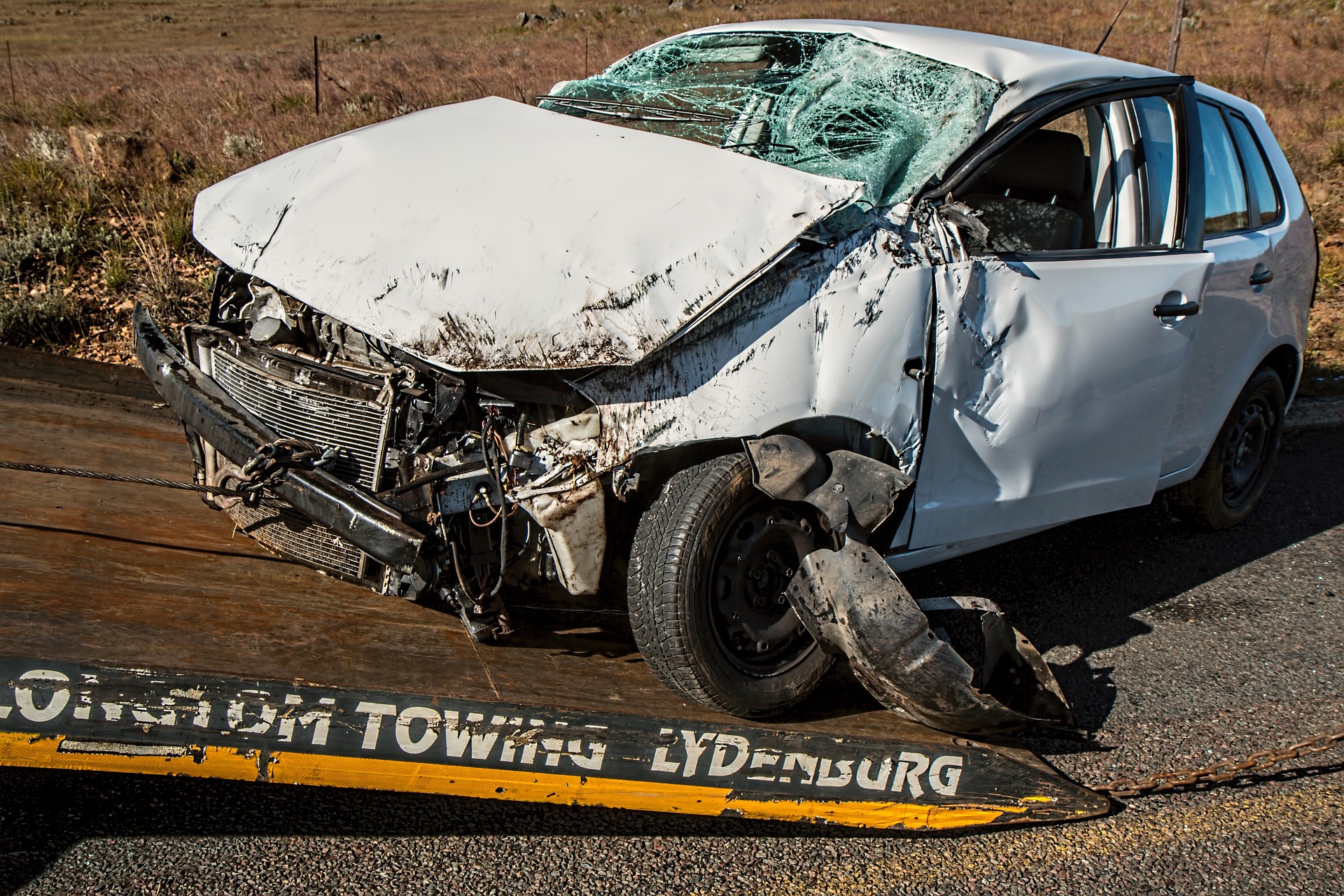Lyft is one of the most popular ridesharing services in the US, with millions of users and drivers. But what happens if you get into an accident while using Lyft? Can you sue Lyft for an accident? Who is responsible for your injuries and damages? How can you get compensation for your losses?
These are some of the questions that many people have after being involved in a Lyft accident. In this article, we will provide you with a complete guide on how to handle a Lyft accident, whether you are a rider or a driver. We will also explain the legal options that you have to sue Lyft for an accident and the challenges that you may face along the way.
Here are the topics that we will cover:
- What is Lyft and how does it work?
- What are the common causes of Lyft accidents?
- What are the types of Lyft accidents and who is liable for them?
- What are the steps to take after a Lyft accident?
- What are the benefits and drawbacks of filing a claim with Lyft’s insurance?
- What are the benefits and drawbacks of suing Lyft for an accident?
- How can you prove negligence and damages in a Lyft accident lawsuit?
- How can you find a qualified lawyer to help you with your Lyft accident case?
By the end of this article, you will have a better understanding of your rights and options as a Lyft user or driver, and how to pursue justice and compensation for your injuries and losses.
What is Lyft and how does it work?
Lyft is a transportation network company (TNC) that connects riders and drivers through a mobile app. Riders can request a ride from nearby drivers who use their own vehicles to provide the service. Drivers can accept or decline ride requests based on their availability and preferences.
Lyft operates in all 50 states and Washington D.C., as well as in some cities in Canada. Lyft offers different types of rides, such as:
- Lyft: The standard ride option for up to four passengers.
- Shared: A cheaper ride option where riders share the ride with other passengers going in the same direction.
- Lux: A premium ride option for up to four passengers in a luxury vehicle.
- Lux Black: A more expensive ride option for up to four passengers in a black luxury vehicle.
- Lux Black XL: A ride option for up to six passengers in a black luxury SUV.
- Access: A ride option for riders who need a wheelchair-accessible vehicle.
Other services, such as:
- Lyft Bikes: A bike-sharing service where riders can rent bikes from stations or docks.
- Lyft Scooters: A scooter-sharing service where riders can rent electric scooters from designated areas.
- Lyft Rentals: A car rental service where riders can rent vehicles from partner companies.
- Lyft Business: A service where businesses can provide rides for their employees, customers, or partners.
Lyft generates revenue through various means. One of its primary sources of income is the rider fee, which is determined based on factors such as distance, time, demand, and location. This fee varies for each ride, ensuring a fair pricing structure. Additionally, Lyft earns a commission from every ride, with the percentage ranging between 20% and 25% depending on the specific type of ride.
These revenue streams enable Lyft to sustain its operations and provide a reliable transportation service to users across different locations. By employing this diversified approach to monetization, Lyft can adapt to market dynamics and continue offering convenient rides to its customers.Drivers keep the rest of the fare, plus any tips that riders give them through the app.
What are the common causes of Lyft accidents?
Lyft accidents can happen for various reasons, some of which are:
- Driver negligence: This is when the driver fails to exercise reasonable care while driving, such as speeding, running red lights, texting, driving under the influence, or falling asleep at the wheel.
- Rider negligence: This is when the rider distracts the driver, interferes with the driver’s control of the vehicle, or causes damage to the vehicle or other property.
- Vehicle defects: This is when the vehicle malfunctions due to faulty parts, design flaws, or lack of maintenance.
- Road hazards: This is when the road conditions are unsafe due to potholes, debris, ice, snow, or construction.
- Third-party negligence: This is when another driver, pedestrian, cyclist, or animal causes or contributes to the accident.
What are the types of Lyft accidents and who is liable for them?
Lyft accidents can be classified into three types based on who is involved and who is at fault:
Type 1: The Lyft driver is at fault and you are a rider
This is when you are riding in a Lyft vehicle and the driver causes an accident that injures you or damages your property. In this case, you may be able to file a https://help.lyft.com/hc/en-us/all/articles/115013080548-Insurance-Policyclaim with Lyft’s insurance policy, which provides at least $1 million in liability coverage for bodily injury and property damage per accident. This means that Lyft’s insurance will pay for your medical bills, lost wages, pain and suffering, and other damages up to the policy limit.
However, there are some limitations and challenges that you may face when filing a claim with Lyft’s insurance. For example:
- You must prove that the Lyft driver was at fault for the accident and that you were not negligent or partially responsible for it.
- You must prove that your injuries and damages were caused by the accident and not by any pre-existing conditions or other factors.
- You must file your claim within the statute of limitations, which varies by state but is usually between two and four years from the date of the accident.
- You may have to deal with multiple insurance companies, such as the Lyft driver’s personal insurance, the other driver’s insurance, and your own insurance, depending on the situation.
- You may face delays, denials, or lowball offers from the insurance adjusters, who will try to minimize your claim or avoid paying it altogether.
Therefore, it is advisable to consult with a qualified lawyer who can help you navigate the complex and often frustrating process of filing a claim with Lyft’s insurance. A lawyer can also advise you on whether you have a valid case to sue Lyft for an accident.
Type 2: The Lyft driver is not at fault and you are a rider
This is when you are riding in a Lyft vehicle and another driver causes an accident that injures you or damages your property. In this case, you may be able to file a claim with the other driver’s insurance policy, which should cover your injuries and damages up to their policy limit.
However, if the other driver is uninsured or underinsured, meaning that they do not have enough coverage to pay for your losses, you may have to rely on your own insurance policy or Lyft’s insurance policy. Lyft provides uninsured/underinsured motorist coverage (UM/UIM) for its riders, which can cover your medical bills, lost wages, pain and suffering, and other damages up to $1 million per accident. This coverage applies only if you have exhausted the other driver’s insurance or if they have no insurance at all.
As with filing claim with Lyft’s liability insurance, you may face some challenges when filing a claim with Lyft’s UM/UIM insurance.
For example:
- You must prove that the other driver was at fault for the accident and that you were not negligent or partially responsible for it.
- You must prove that your injuries and damages were caused by the accident and not by any pre-existing conditions or other factors.
- You must file your claim within the statute of limitations, which varies by state but is usually between two and four years from the date of the accident.
- You may have to deal with multiple insurance companies, such as the other driver’s insurance, your own insurance, and Lyft’s insurance, depending on the situation.
- You may face delays, denials, or lowball offers from the insurance adjusters, who will try to minimize your claim or avoid paying it altogether.
Therefore, it is advisable to consult with a qualified lawyer who can help you navigate the complex and often frustrating process of filing a claim with Lyft’s UM/UIM insurance. A lawyer can also advise you on whether you have a valid case to sue Lyft for an accident.
Type 3: The Lyft driver is involved in an accident while you are not a rider
This is when you are not riding in a Lyft vehicle but you are injured or your property is damaged by a Lyft driver who is either waiting for a ride request or en route to pick up passengers or during rides. In this case, you may be able to file a claim with either the Lyft driver’s personal insurance policy or Lyft’s insurance policy, depending on the situation.
If the Lyft driver is waiting for a ride request (period 1), their personal insurance policy should apply first. However, if their personal insurance does not cover them while driving for Lyft or does not provide enough coverage for your losses, you may be able to file a claim with Lyft’s insurance policy. Lyft provides third-party liability coverage for its drivers during period 1, which provides at least $50,000 per person for bodily injury,
$100,000 per accident for bodily injury, and $25,000 per accident for property damage. This means that Lyft’s insurance will pay for your medical bills, lost wages, pain and suffering, and other damages up to the policy limit.
If the Lyft driver is en route to pick up passengers or during rides (period 2 or 3), their personal insurance policy may not apply at all. In this case, you may be able to file a claim with Lyft’s insurance policy. Lyft provides the same coverage for its drivers during period 2 or 3 as it does for its riders, which includes at least $1 million in liability coverage and UM/UIM coverage for bodily injury and property damage per accident. This means that Lyft’s insurance will pay for your medical bills, lost wages, pain and suffering, and other damages up to the policy limit.
Filing a claim
Filing a claim with Lyft’s insurance as a rider, you may face some challenges when filing a claim with Lyft’s insurance as a non-rider. For example:
- You must prove that the Lyft driver was at fault for the accident and that you were not negligent or partially responsible for it.
- You must prove that your injuries and damages were caused by the accident and not by any pre-existing conditions or other factors.
- You must file your claim within the statute of limitations, which varies by state but is usually between two and four years from the date of the accident.
- You may have to deal with multiple insurance companies, such as the Lyft driver’s insurance, your own insurance, and Lyft’s insurance, depending on the situation.
- You may face delays, denials, or lowball offers from the insurance adjusters, who will try to minimize your claim or avoid paying it altogether.
Therefore, it is advisable to consult with a qualified lawyer who can help you navigate the complex and often frustrating process of filing a claim with Lyft’s insurance as a non-rider. A lawyer can also advise you on whether you have a valid case to sue Lyft for an accident.
What are the steps to take after a Lyft accident?
If you are involved in a Lyft accident, whether as a rider or a non-rider, there are some steps that you should take to protect your rights and interests. These steps include:
- Call 911 if anyone is injured or if there is significant property damage. Get medical attention as soon as possible if you are hurt.
- Exchange information with the Lyft driver and any other drivers involved in the accident. Get their names, contact details, insurance information, license plate numbers, and vehicle descriptions.
- Take photos and videos of the scene of the accident, the vehicles involved, your injuries, and any other relevant evidence.
- Get the names and contact details of any witnesses who saw the accident or who can testify about what happened.
- Report the accident to Lyft through the app or by calling their customer service number. You can also report the accident to your own insurance company if you have one.
- Keep all records and documents related to the accident and your injuries. This includes medical bills, receipts, prescriptions, police reports, correspondence with insurance companies, and any other proof of your losses.
- Contact a qualified lawyer who can help you with your claim or lawsuit against Lyft or any other parties responsible for the accident. A lawyer can advise you on your legal options,
represent you in negotiations with insurance companies, and fight for your rights and interests in court if necessary.
What are the benefits and drawbacks of filing a claim with Lyft’s insurance?
Filing a claim with Lyft’s insurance may seem like the easiest and fastest way to get compensation for your injuries and damages after a Lyft accident. However, there are some benefits and drawbacks that you should consider before deciding to file a claim with Lyft’s insurance. Here are some of them:
Benefits
- You may be able to get compensation for your losses without having to go to court or prove negligence on the part of the Lyft driver or any other party.
- You may be able to get compensation for your losses even if the Lyft driver or any other party does not have enough insurance coverage or any insurance at all.
- You may be able to get compensation for your losses even if you are partially at fault for the accident or if you have a pre-existing condition that was aggravated by the accident.
Drawbacks
- You may not be able to get full compensation for your losses, as Lyft’s insurance policy has limits and exclusions that may apply to your case.
- You may have to deal with multiple insurance companies, such as the Lyft driver’s insurance, your own insurance, and Lyft’s insurance, which can be confusing and time-consuming.
- You may face resistance, delays, or denials from the insurance adjusters, who will try to minimize your claim or avoid paying it altogether. They may also try to pressure you into accepting a lowball offer or signing a release that waives your right to sue Lyft or any other party.
What are the benefits and drawbacks of suing Lyft for an accident?
Suing Lyft for an accident may seem like a more difficult and risky option than filing a claim with Lyft’s insurance. However, there are some benefits and drawbacks that you should consider before deciding to sue Lyft for an accident. Here are some of them:
Benefits
- You may be able to get full compensation for your losses, as you can seek damages for your medical bills, lost wages, pain and suffering, and any other losses that you suffered as a result of the accident.
- You may be able to hold Lyft accountable for its negligence or wrongdoing, such as hiring unqualified drivers, failing to conduct background checks, failing to maintain safety standards, or failing to provide adequate training or supervision.
- You may be able to deter Lyft from engaging in similar negligence or wrongdoing in the future, which can help prevent other accidents and injuries from happening.
Drawbacks
- You may have to prove negligence on the part of Lyft or any other party, which can be challenging and complex. You will need strong evidence and expert testimony to support your case.
- You may have to face legal defenses from Lyft or any other party, such as contributory negligence, assumption of risk, statute of limitations, or arbitration agreements. These defenses can limit or bar your recovery.
- You may have to wait longer to get compensation for your losses, as lawsuits can take months or years to resolve. You will also have to pay legal fees and costs associated with your lawsuit.



